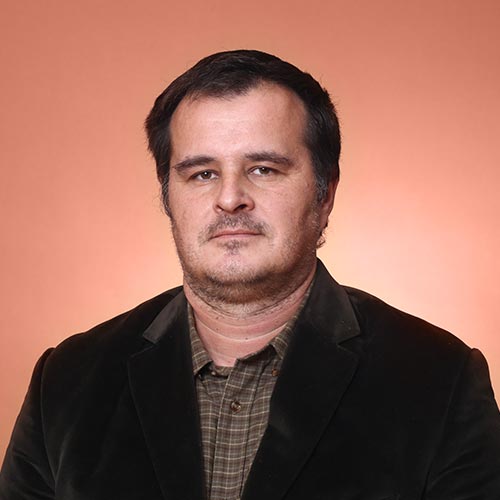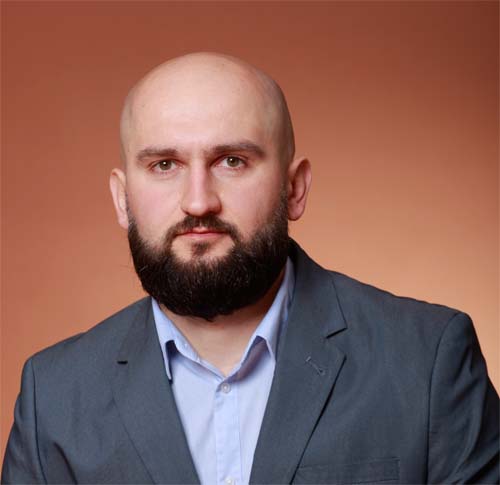Silviculture I
ŠP4001 - obavezniOpterećenje: 45(P) + 0(L) + 30(A) + 0(PK) + 0(S) + 0(TJ) + 0(SJ) + 24(T)
Sadržaj predmeta: While listening to subjects and working on exercises, students become familiar with the basic tasks of forest seed production, forest nurseries, as well as raising forest crops and tree plantations.
and bushes.
List of lectures:
1. Structure of forest seeds. What is forest establishment and what does it do? Seeds of forest trees and shrubs. Evolutionary adaptation of seeds, seed structure of gymnosperms and angiosperms. Structure of the seed embryo, seeds. Embryo structure, types of seeds, chemical composition of seeds, fruiting, periodicity of fruiting.
2. Ripening and collection of seeds/fruits. Forest seed production facilities. Estimation of forest seed yield. Criteria for determining the ripeness of seeds or fruits, collection of fruits and seeds (time, methods), collection of unripe or overripe seeds, handling of freshly collected seeds, preliminary drying, temporary storage, transport.
3. Cleaning and processing of seeds. Extraction of seeds from cones, cones and technological procedures in cones (example of cones in HŠI-Jastrebarsko), extraction of seeds with fleshy embryos, macerators, extraction of seeds from pods, seed processing (reasons, methods).
4. Drying and storage of seeds. Division of seeds with regard to moisture content, drying temperatures, moisture, storage methods and media for preserving forest seeds, factors affecting seed preservation (moisture content, temperature, aeration, pathological problems, time, species), natural vitality.
5. Dormancy of forest seeds. Concept and definition of dormancy, division of dormancy, overcoming dormancy, stratification (type and duration of stratification, media for stratification), scarification (methods, devices and equipment).
6. Elements of forest seed quality. Seed sampling, seed purity, seed moisture content, absolute seed weight or weight of 1000 seeds, germination, vitality (mechanical methods, biochemical methods, radiographic method, method of growth of released embryos, etc.), calculation of the use value of forest seeds.
7. General information about forest nurseries. History of nurseries, areas and capacities of forest nurseries in the Republic of Croatia, division of nurseries, choice of habitat for the establishment of forest nurseries.
8. Tillage. What is tillage, division of tillage, basic and supplementary tillage, depth and volume of tillage, basic devices and tools used in tillage.
9. Sowing seeds and transplanting seedlings. Pre-sowing preparation of seeds (dormant and non-dormant), the term seedbed, sowing time and depth, sowing density, sowing methods (sweeping, rows, machine), preparation of the sowing area, sowing in open beds, sowing in Duneman beds, container sowing, substrates for covering of seeds, retention of plants in the nursery, germination of seeds, protection of seeds, concept of growing area, time of transplanting, density of transplanting, machine and manual transplanting, growing technology in the growing area, retention of plants in the growing area.
10. Basics of fertilization. Division of fertilizers, mineral fertilizers, organic fertilizers, organic-mineral fertilizers, microfertilizers, green fertilization, methods of fertilizer application, symptoms of certain nutrient deficiencies on forest seedlings.
11. Container production of seedlings. History of container production, division of containers, materials for making containers, issues of seedlings produced in containers, technological solutions to prevent deformation of the root system, sizes and shapes of containers, container systems, substrates for filling containers, growing time in containers, greenhouses, care of plants in containers .
12. Global trends in afforestation. Definition of forest crops according to FAO, history of afforestation in the World, forested areas, percentage of forest crops by continent, annual establishment of new areas. Areas suitable for afforestation, defining forest land, potential areas for afforestation in the Republic of Croatia. Global world trends in afforestation, genera (species) that are most often used, participation of forest crops by tree species, purposes of forest crops/plantations (industrial, non-industrial, unspecified), trends in establishment (plantations of valuable wood, plantations for the production of wood for energy, fiber sources, substitution for natural forest products), negative sides of raising forest crops.
3. Establishment of new forest plantations. What are crops, intensive crops, plantations, available areas in the Republic of Croatia, the structure of raised plantations, preparatory work for afforestation (selection of suitable areas, selection of tree species, methods of afforestation (sowing seeds and planting seedlings with bare or coated roots), time of afforestation, preparation soil for afforestation, number of plants and spatial arrangement at establishment).
14. Care and maintenance of new forest plantations. Afforestation success, the relationship between seedling quality and afforestation success, weed destruction, filling, cleaning, thinning (types and intensities), branch pruning, crown formation, top dressing, irrigation, patrols.
15. Technologies for raising forest plantations of the main tree species. Raising and caring for soft-leaved crops/plantation (poplar and willow), raising and caring for autochthonous deciduous crops (birch, acacia, black alder, ash, black walnut, etc.), raising and caring for autochthonous and allochthonous conifer crops.
List of exercises:
1. Examination of the germination of forest seeds. Laboratory exercises. Students independently test the germination of forest seeds in modern, open and closed type germinators. At the end of the test, the calculation of germination, germination energy, useful value of seeds and the number of seeds that can be obtained from 1 kg of seeds is done. As part of the exercises, students are introduced to the elements of seed quality, types of germination and substrates for testing seed germination in accordance with the ISTA Rules. Students are shown the operation of the WinSEEDLE software, for the morphological analysis of seeds and needles, i.e. plant diseases. Students are introduced in a special way to the international rules for seed quality testing (ISTA) with special emphasis on the area of seed germination testing. In addition to the introductory exercises, the seed germination test lasts 3 weeks, for a total of 4 weeks. (8 hours).
2. Determining the vitality of forest seeds with special reference to the indigo carmine and tetrazole method. Laboratory exercises. Students are introduced in detail to the basic methods of testing the viability of seeds, and special emphasis is placed on the indigo carmine and tetrazole methods. Students independently test seed vitality using the tetrazole method. For the introduction in the hall and the laboratory work of determining the vitality of forest seeds using the tetrazole method, three sessions of two hours each are required, which makes a total of 6 hours.
3. General information about forest nurseries. In the hall, students learn about the history of nurseries in Croatia, the division of nurseries, definitions from nurseries, the choice of habitat for establishing nurseries (climate, land, orographic conditions). It also talks about the technical conditions necessary when setting up a nursery (buildings, mechanization, fencing, irrigation). (2 hours).
4. Calculation of nursery capacity for poplars. Practical exercises. In the hall, students are introduced in general to flood forests in the Republic of Croatia, nurseries for the production of soft-leaved trees, types of growing poplar plantations, the seedbed-nursery method, establishing a seedbed and a seedbed, maintenance work in a seedbed and a seedbed, extracting seedlings, planting seedlings in the field, technology raising plantations and intensive cultures of soft leaves as well as the machinery used for this purpose. The second part of the exercises refers to the solution of specific tasks where it is necessary to calculate the capacity of the nursery for afforestation of a certain area with poplar or willow seedlings, where the age of the seedlings, the planting distance and the gap in the seedbed and the nursery are given, i.e. the non-productive area of the nursery. The class is designed in such a way that the students in the hall demonstrate the production of poplar cuttings, to show what a scar (1/1) or seedling (2/3) looks like, each student has the opportunity to try making cuttings himself. (2 hours).
5. Calculation of nursery capacity for conifers. Practical exercises. In the hall, students are introduced in detail to the parts of the nursery for the production of conifer seedlings (nursery, growing area), the number of plants in the nursery and growing area, the number of plants and the amount of seeds for quality rejuvenation and reforestation. The second part of the exercises refers to solving a specific task where it is necessary to calculate the capacity of the nursery for the production of the required number of seedlings of a certain type of conifer, where we know: afforestation area, type of trees, spatial layout, age of seedlings, scrap in the nursery and growing area, i.e. the non-productive area of the nursery. (2 hours).
6. Transplantation of plants in the nursery. Practical exercises. In the nursery Forest Garden and Arboretum of the Faculty of Forestry, University of Zagreb, students are introduced to the theoretical basics of transplanting plants in the nursery (definitions of planting material, markings of seedlings, land preparation before transplanting, transplanting time, transplanting intervals, transplanting methods, transplanting rules, works care after transplantation,...). The second part of the exercises refers to practical work where students are divided into groups (there is a leader of each group) and they manually transplant seedlings of a certain type of conifer. (2 hours).
7. Planting plants on the field. Practical exercises. In the nursery Forest Garden and Arboretum of the Faculty of Forestry of the University of Zagreb, students are introduced to the theoretical basics of planting plants in the field (definitions, methods of afforestation, types of seedlings, types of containers, spatial arrangement of planting, basic methods of planting seedlings with bare roots,... ). The second part of the exercises refers to the demonstration of basic methods of planting bare root seedlings. (2 hours).
8. Propagation of trees and shrubs in the nursery. Practical exercises. In the hall, students are introduced to the methods of vegetative propagation of plants, where each method is explained in detail. Propagation by cuttings is especially detailed (therefore, factors affecting rooting, types of cuttings according to origin with examples, types of cuttings according to degree of maturity and stage of development with examples, advantages and disadvantages of vegetative propagation of plants, substrates for rooting cuttings, phytohormones and growth regulators , groups of plants with regard to reactions to rooting,...). When it comes to vaccination, each method and type of vaccination is explained to the students in detail, the factors that affect the success of vaccination are explained, and numerous pictorial examples are given. The second part of the exercises refers to the demonstration of some ways of propagating ornamental trees and shrubs (cuttings, grafting) in the hall itself. Students have the opportunity to see how certain types and types of cuttings are made according to origin, finishing cuttings. Students are shown tools, accessories, hormones and substrates for rooting cuttings. Certain methods and types of vaccination are also demonstrated to the students, and tools and accessories for vaccination are shown. Students have the opportunity to independently try to make cuttings or perform experimental vaccination. (2 hours).
9. Sowing seeds in the nursery. Practical exercises. In the nursery Forest Garden and Arboretum of the Faculty of Forestry of the University of Zagreb, students are introduced to the theoretical basics of seed sowing in the nursery (methods of forest seedling production, seed sowing procedure (land preparation, seed preparation, sowing itself, procedures after sowing), methods are explained sowing, sowing time, sowing density, sowing depth,...). The second part of the exercises refers to practical work where students are divided into groups (there is a leader of each group) and manually sow the seeds of a certain type of conifer. (2 hours).
10. Plant care in the nursery. Practical exercises. Students are explained in the hall the division of plant care, types of fertilizers, compost and methods of obtaining compost, green fertilization, work in the seedbed before and after the appearance of the pods, work in the seedbed in the first and second year of cultivation, seedling quality criteria, ways of keeping seedlings (trapping, refrigerators), handling of seedlings,...Students are shown seedlings of certain species with certain symptoms of nutrient deficiency that are manifested on the assimilation organs. Certain instruments and scientific equipment used to determine physiological (PMS, etc.) or morphological (WinRHIZO ProLA2400, etc.) quality criteria of seedlings are shown. (2 hours).
List of field classes:
1. Production of seedlings of hard-leaved trees (alcacia, marigold, beech, ash). Field teaching would be conducted in the Zdenački Gaj nursery, Grubišno polje forestry or in another nursery of similar production. The field teaching is of a complex nature and is attended by colleagues from the course Basics of Mechanization in Forestry.
2. Production of soft-leaved seedlings, raising and caring for poplar cultures/plantations. Field classes would take place in the Višnjevac nursery, Osijek forestry. After a detailed introduction to the nursery technology of growing seedlings (nursery-nursery, semi-nursery), they would visit the workshop on the newly built areas in the immediate vicinity of the Osijek or Valpovo forestry. Production of seedlings of hardwoods, ornamental trees and shrubs and production of grafts for clonal seed plantations. Field classes are held in the Hajderovac nursery, Požega Primary School. The field teaching is of a complex nature and is attended by colleagues from the course Basics of Mechanization in Forestry.
3. Forest seed production and nursery production of seedlings Field teaching would be conducted at the Croatian Forestry Institute. Nursery production of bare and coated root seedlings. Container production of planting material. Mulch for mulching and processing of forest seeds. A refrigerator for storing forest seeds. Laboratory for testing seed quality. Seed Savings Bank. The line for thermotreating seeds (stem oak, sweet chestnut, common beech). Laboratory for micropropagation of plants in tissue culture. Propagation and production of seedlings in protected areas (greenhouses). The field teaching is of a complex nature and is attended by colleagues from the course Basics of Mechanization in Forestry.
4. Raising and caring for conifer cultures. The field teaching would take place in the area of Duga Resa Forestry as part of the HŠI Jastrebarsko research training ground (comparative experiment of conifers).
Literatura:Obavezna literatura:
1. Oršanić, M., Anić, I., Drvodelić, D., 2005: Šumsko sjemenarstvo i rasadničarstvo (Interna skripta). Zagreb. 228 str.
2. Oršanić, M., Anić, I., Drvodelić, D., 2005: Priručnik za razmnožavanje drveća i grmlja (Interna skripta). Zagreb. 125 str.
3. Matić, S., B. Prpić, 1983: Pošumljavanje. Savez inžinjera i tehničara.
Preporučena literatura:
5. Savill, P. E., J. Auclair, D. J. Falck. Plantation Silviculture in Europe. Oxford University Press. 1997.
6. Šmelkova, L. Lesne školky. Zvolen. 2001
7. Krüssmann, G. Die Baumschule. Paul Parey Verlag. 1997.
8. Davidson, H., Mecklenburg, R. Nursery Management. Prentice Hall.2000.
9. Chapman, G. A. & R. D. Wray. Christmas Trees for Pleasure and Profit. Rutgers University Press. Third Edition. 1987.
Nositelji
Prof.
Milan Oršanić PhD
distinguished professor
Email: morsanic[at]sumfak.unizg.hr
more assoc. prof.
Damir Drvodelić PhD
associate professor
Email: ddrvodelic[at]sumfak.unizg.hr
moreSuradnici
assoc. prof.
Damir Drvodelić PhD
associate professor
Email: ddrvodelic[at]sumfak.unizg.hr
more assoc. prof.
Vinko Paulić PhD
associate professor
Email: vpaulic[at]sumfak.unizg.hr
more







